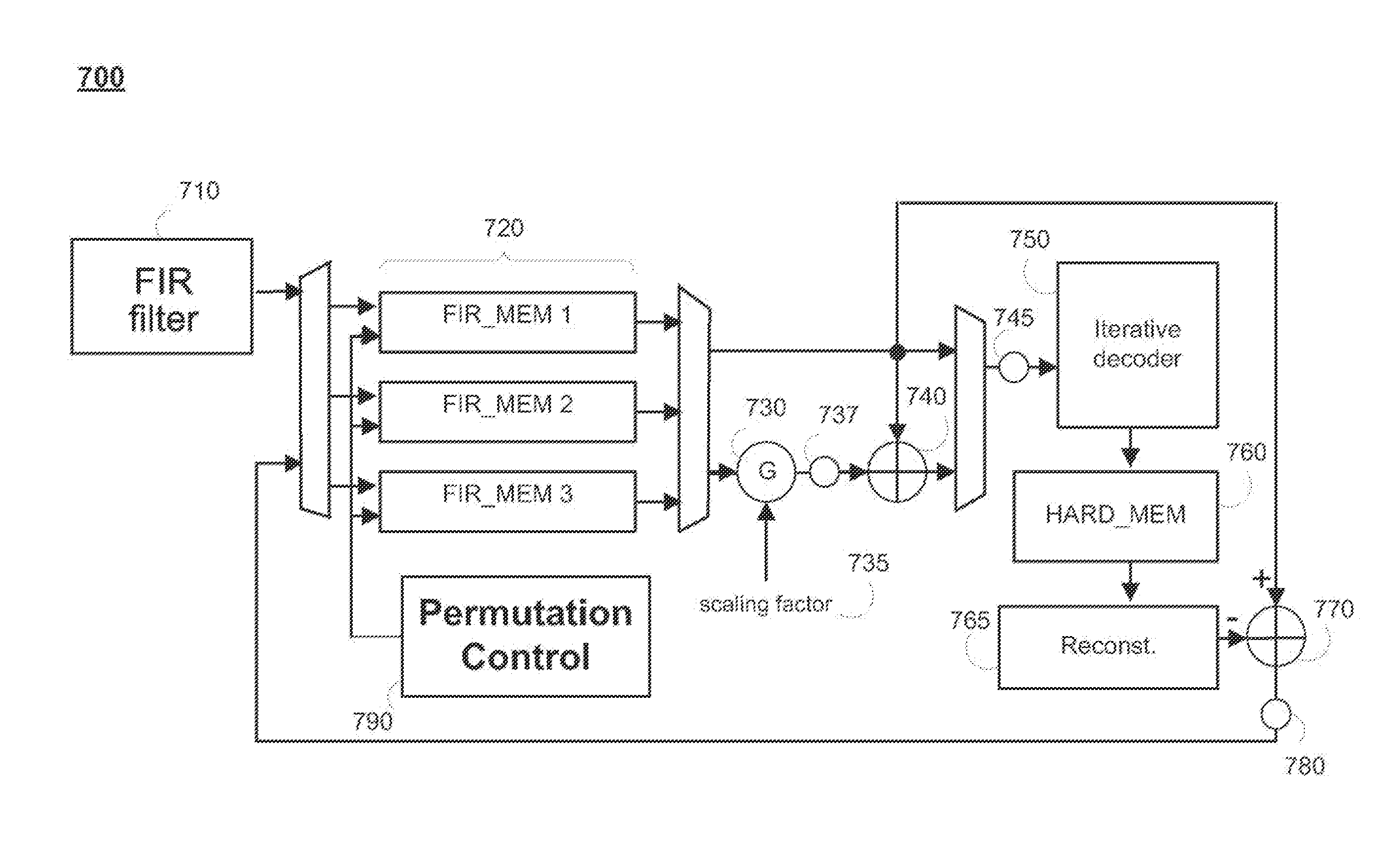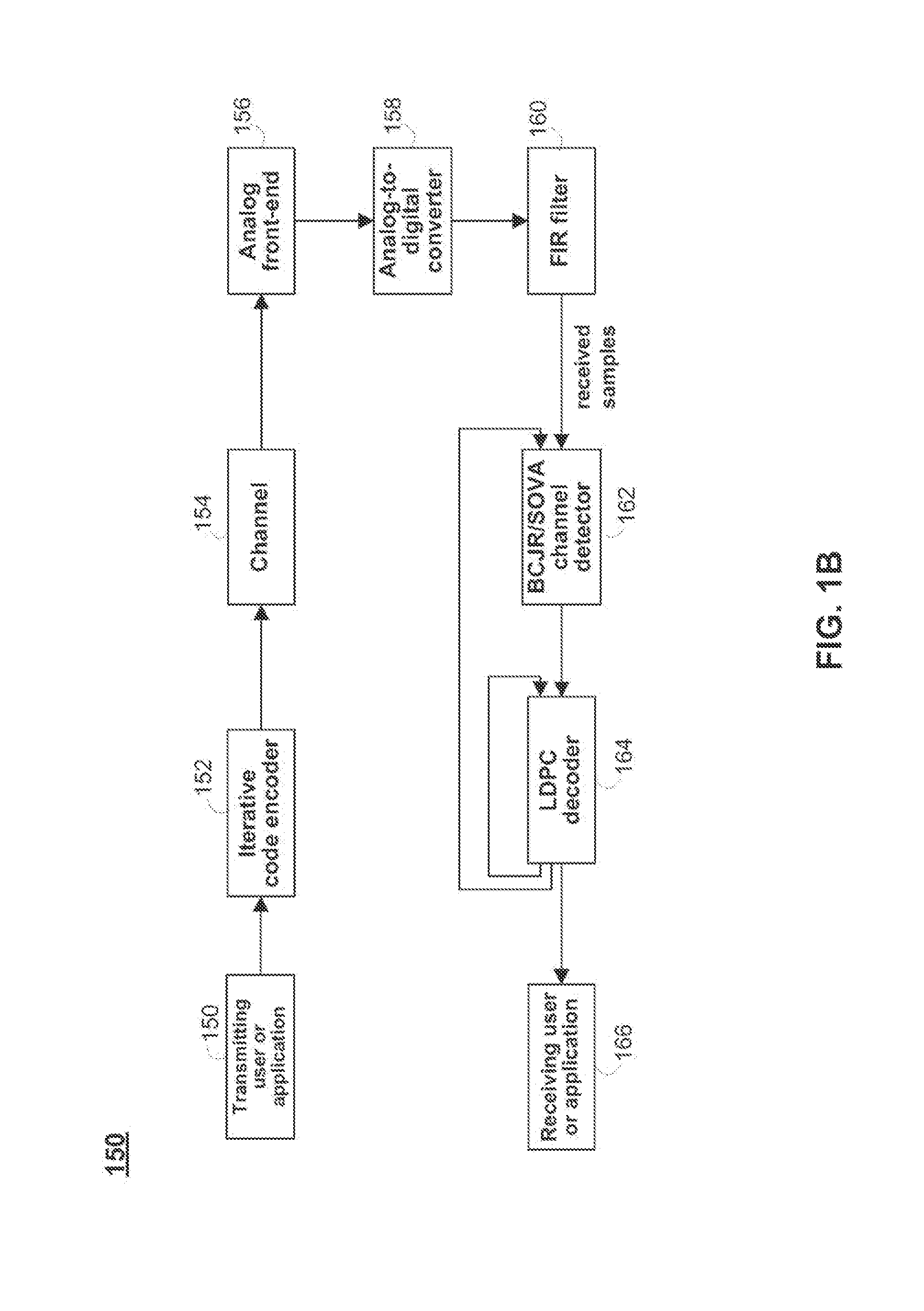Iterative decoding systems using noise-biasing
a decoding system and noise bias technology, applied in the direction of coding, code conversion, instruments, etc., can solve the problems of reducing application performance, limiting the error-rate that cannot be improved, and iterative decoding algorithms suffer from an error floor, so as to reduce the error floor, improve application performance, and reduce the effect of interruptions in servi
- Summary
- Abstract
- Description
- Claims
- Application Information
AI Technical Summary
Benefits of technology
Problems solved by technology
Method used
Image
Examples
Embodiment Construction
[0022]FIG. 1A shows an illustrative communications system 100 employing iterative decoding in accordance with some embodiments. Communications system 100 may be particularly useful for decoding received information over memoryless channels, while communications system 150 (FIG. 1B) may be particularly useful for decoding received information over channels containing memory.
[0023]Communications system 100 may be used to transmit information from transmitting user or application 102 to receiving user or application 118. Transmitting user or application 102 may be any object or entity that produces information. For example, transmitting user or application 102 may correspond to a software program in a computer system or a to a component of a wireless communications transmitter in a radio system. Transmitting user or application 102 may produce information in the form of a data stream, and such a data stream may be represented by a sequence of symbol values that have been pre-processed ...
PUM
 Login to View More
Login to View More Abstract
Description
Claims
Application Information
 Login to View More
Login to View More - R&D
- Intellectual Property
- Life Sciences
- Materials
- Tech Scout
- Unparalleled Data Quality
- Higher Quality Content
- 60% Fewer Hallucinations
Browse by: Latest US Patents, China's latest patents, Technical Efficacy Thesaurus, Application Domain, Technology Topic, Popular Technical Reports.
© 2025 PatSnap. All rights reserved.Legal|Privacy policy|Modern Slavery Act Transparency Statement|Sitemap|About US| Contact US: help@patsnap.com



